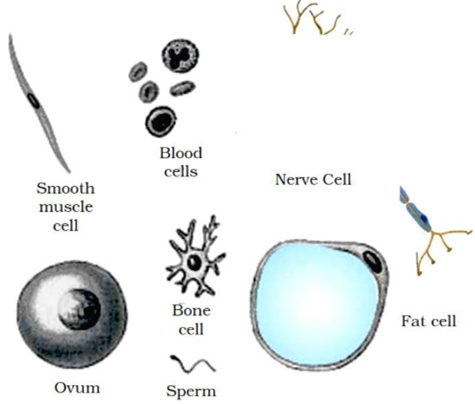CBSE
Class 10 Class 12
The cell is called the fundamental unit of life. A cell is capable of independent existence and can carry out all the functions which are necessary for a living being. A cell carries out nutrition, respiration, excretion, transportation and reproduction; the way an individual organism does.
Cell theory (Schleiden, Schwann and Virchow):
Types of Cell & Organism:
| Characteristics | Unicellular organism | Multicellular organism |
| Cell number | Single cell | Large number of cells |
| Function | All functions are performed by single cell |
Different cells perform differently specific functions. |
| Division of labour | Not performed | Cells specified to perform different functions. |
| Reproduction | Involves the same single cell | Specialised cells, germ cells take part in reproduction. |
| Life span | Short | Long |
On the Basis of Type of Organization
| Prokaryotic Cells | Eukaryotic Cells |
| A very minute in size. | Fairly large in size. |
| Nuclear region (nucleoid) not surrounded by a nuclear membrane. |
Nuclear material surrounded by a nuclear membrane. |
| Single chromosome present. | More than one chromosome present. |
| Nucleolus absent. | Nucleolus present. |
| Membrane-bound cell organelles are absent. |
Membrane-bound cell organelles are present. |
| Cell division by fission or budding (no mitosis). |
Cell division by mitosis or meiosis. |
There is much variation in size, shape and number of cells in different organisms, and also in various parts of the body. Most of the cells are only a few micrometres in diameter and are visible only with the help of a microscope.
Cells may be spherical, spindle-shaped, elongated, polyhedral or irregular in shape. The shape of the cells is determined by the specific function they perform.
The number of cells is related to the size of the organ or body. Thus, small organisms have limited number of cells, while the larger ones such as elephant, whale or banyan tree have a countless number of cells.
Some organisms can also have cells of different kinds. Look at the following picture. It depicts some cells from the human body.
